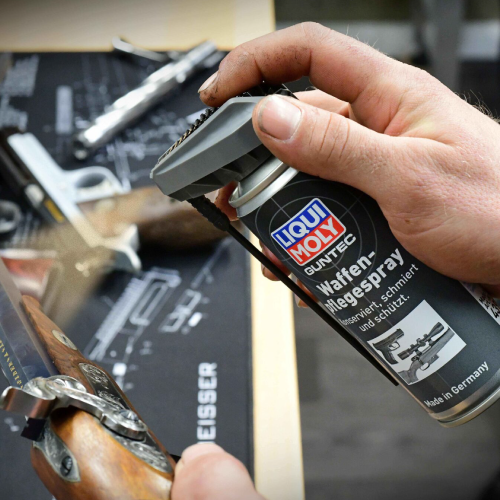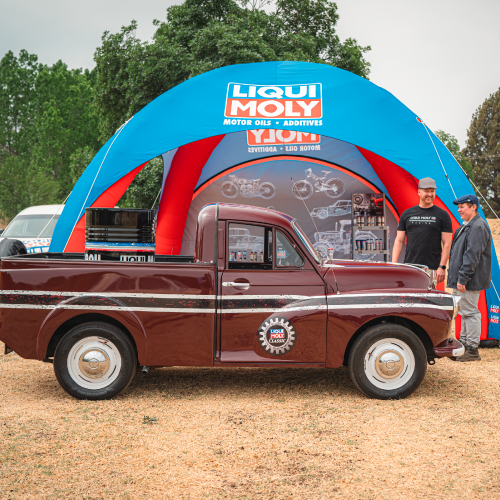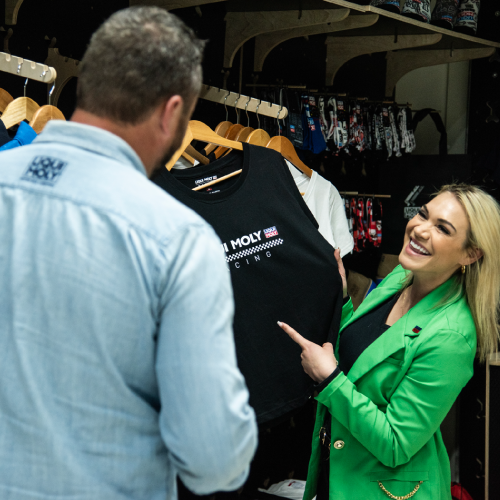Given the uncharacteristic snowfall in South Africa this September, and the fact the weather does seem to be getting more unpredictable in Africa each year, we felt we should call upon the Scottish members of our HQ Team to put together a helpful Beginners Guide to Winter Driving in Africa. This includes top tips and tricks for dealing with the effects of cold on both humans and vehicles, as well as a guide on how to drive in snow.
The format for the article will follow a helpful Question & Answer format, starting with…
Q1) I’m expecting cold weather, what should I check on my vehicle?
First, a quick check under the bonnet to ensure nothing is frozen solid. Water in your radiator and windscreen washer fluid are the two most common places where you might have fluids freeze, but it’s also worth having a general squeeze around the pipes to make sure nothing is solid. Most radiator coolant is also anti-freeze, so as long as you’re not just running water in your radiator, you should be fine.
Don’t forget about the washer fluid, as snow collects all the dirt together on the road, and having a clean windscreen while driving in freshly melted snow is always a battle. Most washer fluid will remain liquid down to -32degrees, with Liqui Moly’s product remaining liquid down to -52degrees: Windscreen Washer Freeze Prevention Fluid.
More than you’ll need for any African Winter!
It’s worth also checking your tyres for adequate tread as anything to increase grip in snow will make everything easier. We cover snow driving techniques a little later in this article.
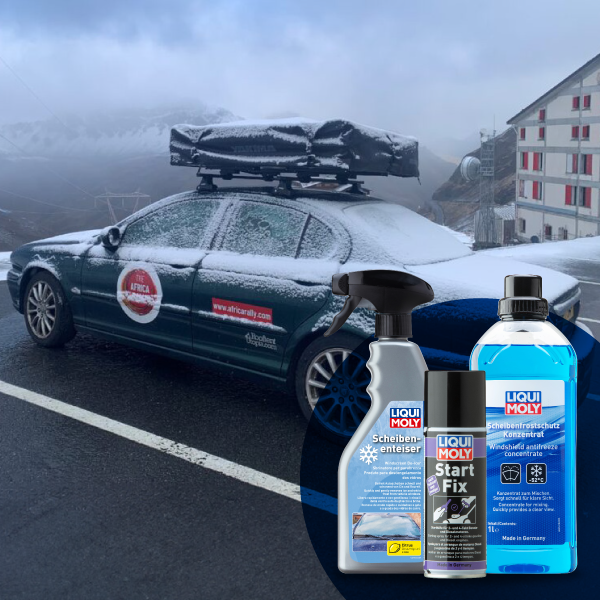
A rather snowy start to the morning for the 2007 Africa Rally Jaguar X-Type.
Q2) I need to drive in winter conditions, what should I keep in my vehicle?
Prior to ensuring the correct equipment exists in your vehicle for winter conditions, it’s also worth asking the question – do you need to drive? …in the first place.
Cold weather in Africa usually doesn’t last more than a day or so, particularly when snow is involved, so if your journey isn’t absolutely necessary, it might be worth delaying it until the winter weather passes.
Let’s assume you’ve no option but to head out. These are the items we’d recommend (at a minimum) you have in your vehicle:
- De-icer for the windscreen
- Ice scraper to remove settled snow
- Shovel to dig out deeper drifts
- Blanket & additional warm clothes
- External Phone Charger in case you get stuck and need to call for help
- High sugar food / drinks
- Jump leads
- Hi-Vis / Warning Triangle
- Africa Rally Sunglasses (to avoid snow-glare)
It’s recommended to stick to main roads when travelling in snow, but if you do plan to get off-road, make sure to let someone know where you are going and when you intend to arrive. It may also be worthwhile packing additional recovery gear, and a first aid kit, in case you get stuck.
Q3) My windscreen is frozen, how should I go about defrosting it?
Firstly, if your plan is to use the heated windscreen feature to melt the ice on your windows be sure to turn off the auto-wiper control first, before turning the ignition on, otherwise the wipers may be frozen to the windscreen and you’ll risk blowing the wiper control fuse.
Additionally, don’t pour hot water from the kettle onto your windscreen to melt the ice. The initial temperature shock could cause your windscreen to crack if there are existing vulnerabilities, and even if this doesn’t happen, if the outside air temperature is still below 0 degrees, then it will simply refreeze only thicker.
The best advice is to use a product such as Liqui Moly Windshield De-Icer; there’s a helpful video on how to use it contained here as well. These products typically have nice long use by dates, so it’s worth buying a bottle and keeping it to use each winter.
Q4) The engine won’t start, and I drive a Petrol, what should I do?
A Petrol vehicle, particularly a classic car, refusing to start because of the cold is nothing unusual. It can be above freezing with no snow at all, and many of you will have experienced issues with an initial cold start – particularly on something like a 3litre V6 Essex engine.
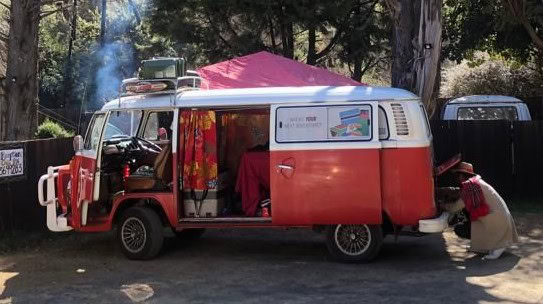
Attempting to start a V6 Essex motor in Clarens, in Winter, in the back of a 1976 VW Kombi.
First, the advice is to start with vehicle with an extra kick of fuel, so if you’ve a manual choke, pull this all the way out. New vehicles won’t have one of these, so try pumping the accelerator a few times before turning the key to get the fuel circulating.
Should this be unsuccessful, you can purchase products such as Start Fix to give you an extra kick of fuel.
Still not starting? A push start (or a pull start under tow) should also do the trick as the various components in your engine start warming up. Note, as stopping / braking distances can be up to three times longer in snow, only attempt a push / pull start with more than adequate run off room.
Q5) The engine won’t start, and I drive a Diesel, what should I do?
When a Diesel vehicle refuses to start, you know the weather is cold! A tried and tested technique by the Africa Rally HQ Team here is a rather unconventional one, but trust us, it’s never failed us yet.
Simply remove the plastic cover to your engine, acquire some hot (dry as possible) bath towels and lay them on top of your engine. After 1-2minutes, try to turn the ignition and the engine should start. It will sound like a bit of a tank for a few minutes, and our recommendation is to let it idle for another 5minutes before trying to drive anywhere, but that will resolve your starting issue.

How to start a 2007 Jaguar X-Type 2.2TDI in the snow.
Q6) There’s snow on my driveway, how should I stop the wheels on my 2WD from spinning?
Fresh snow can have a fair amount of grip, so if you need to be somewhere and you don’t fancy getting the shovel out, have a quick walk up / down the driveway to assess the snow. If it’s fresh, it will help you get a little more traction. That said, if your neighbours have been out before you and the snow is compacted, then their vehicle tracks are more likely to be icy and cause your wheels to skid in the snow.
We would recommend starting the vehicle in second gear and accelerating slowly away, holding the biting point of the clutch until you are rolling, as this will avoid wheel slip.
Finally, if neither of these techniques are working for you, you can increase traction behind the wheels (either front or back depending on whether you are driving a front wheel or rear wheel drive vehicle), by putting your floormats under the tyres. This additional traction will allow you to pull away.
(Note: This technique can also be used on sand)
Q7) I live on a hill, what should I do if my car starts to slide?
The best technique to avoid your vehicle sliding on snow / ice is to avoid any sudden braking or locking of the wheels. Avoiding the brakes all together, by using engine braking (changing into a lower gear to allow the revs in your engine to slow the vehicle) is a great way to achieve this. Stay in low gear going downhill, and leave x3 times your normal safe distance (from 2 seconds up to 6 seconds minimum) behind the vehicle in front of you.
Should your vehicle start to slide, adopt this procedure:
- Don’t Panic.
- Don’t stamp your foot on the brakes, take your foot wholly off the accelerator.
- Steer gently into the skid (so for example if the rear of the car is skidding to the right, gently turn the steering wheel to the right)
- Allow the vehicle to come to a complete stop, before selecting second gear and continuing your journey.

Sometimes Winter Driving can’t be avoided, even for the Africa Rally HQ Team.
Q8) I drive an automatic, what should my technique be for snow?
Stay at home. 2WD automatics weren’t meant to be driven in snow, it will be safer for everyone if you take the day off. Should you absolutely have to go somewhere… call up a friend with a manual vehicle, or 4WD.
(Note: We’ve referenced Liqui Moly products as this is what we use in our workshop and when we drive in cold conditions, we know they work, however other brand products are available.)

Paul Clayton
British adventurer, explorer, and Africa Rally organiser, Paul Clayton, has been lost, stuck, and usually found himself in highly unsuitable ridiculous vehicles on all continents, but Africa is by far his favourite.


